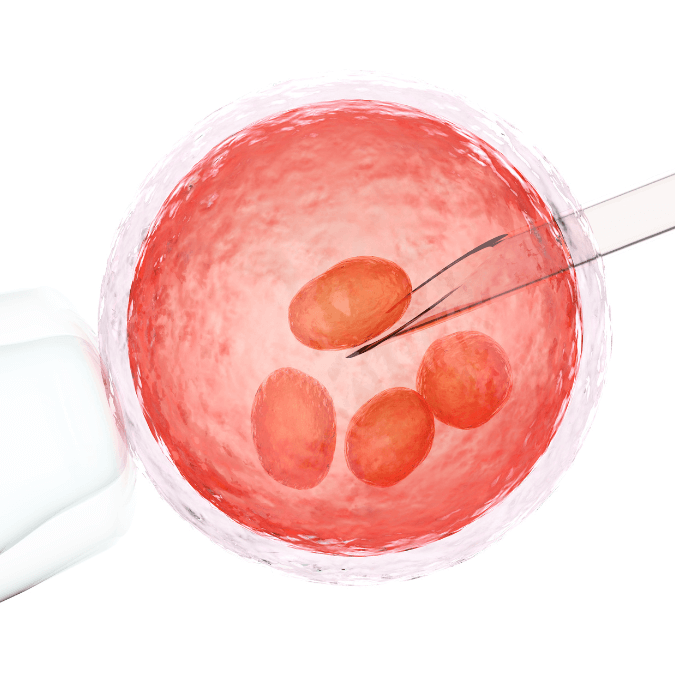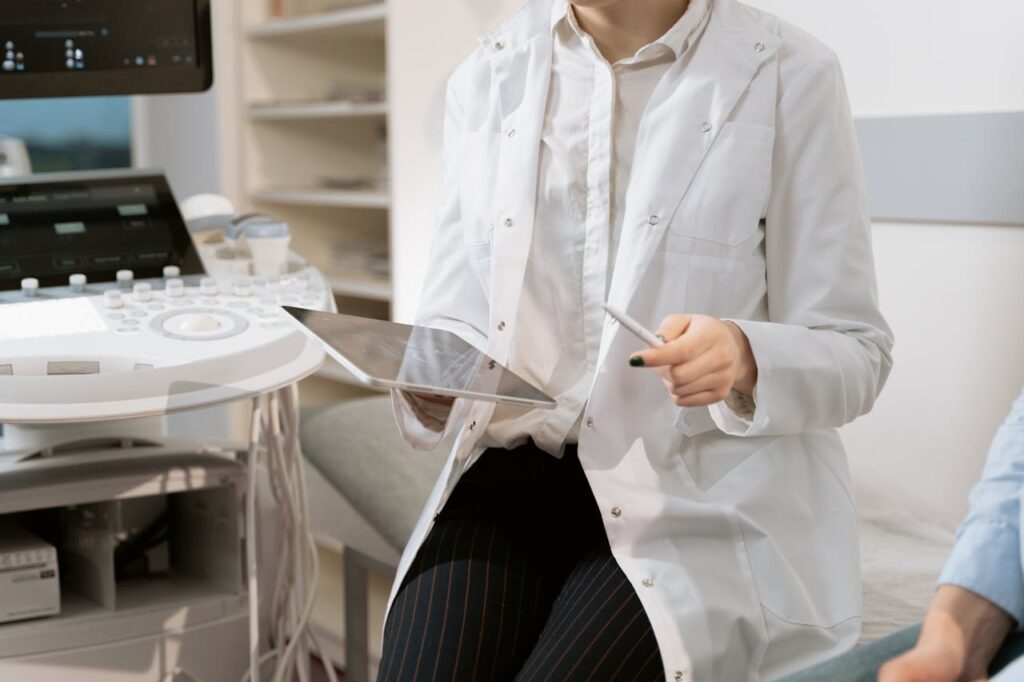Frozen Embryo Transfer (FET)
For most couples undergoing IVF treatment there is the opportunity to freeze excess good quality embryos. Modern freezing techniques mean that now almost every embryo that is frozen (95%+) will survive being frozen and be able to be used for treatment with pregnancy rates per transfer equal to fresh. This gives couples added reassurance if the initial treatment is unsuccessful as well as the opportunity to seek further sibling pregnancies in the future.
Treatment with frozen embryos is safe and usually involves minimal or no medication for patients. Staff at North West Fertility will advise you on whether or not you may require any medication.


How successful is treatment with Frozen Embryos?
Over the last few years, with changes to the freezing techniques as well as only freezing blastocyst (day 5 or 6 post fertilisation) embryos that have been carefully selected, pregnancy rates from frozen embryo transfer cycles have now become as successful as fresh cycles. Implantation rates (the percentage chance of each embryo implanting to make a pregnancy) should be over 40% for many patients.
Indeed because of the potential benefits from the embryo being able to be replaced in a natural environment, there are studies being undertaken to see if all patients should now be offered frozen embryo cycles instead of fresh transfers
What does a frozen embryo treatment cycle involve?
For most patients the process of treatment is much simpler and less invasive than a fresh cycle of treatment. For most patients treatment can be undertaken without the need for stimulation in a natural cycle in which your own hormones produced from your ovary are used to prepare the lining of the womb to receive the embryo. The timing of the embryo transfer will be based on your natural ovulation detected by urine ovulation testing kits. For patients who have very irregular cycles, do not ovulate or who want to have more control over the timing of treatment then a stimulated cycle can be utilised using low doses of hormones to prepare the lining of the womb to receive the thawed embryo

Take the first step in your Fertility journey
Frozen Embryo Transfer Pricing
Our commitment to providing effective care, without adding complexity or cost is why our treatment plans are accessible to all. Our team are happy to talk you through our treatment prices. Contact us now if you have a question.
Included Items:
- Access to online consents platform & patient support app
- Electronic Witnessing
- Cycle planning
- In treatment scan
- Embryo thaw and culture
- Embryo transfer
- EmbryoGlue
- HFEA License Fee
- Pregnancy scan or follow up consultation depending on cycle outcome.
Additional Costs if applicable
**Medication will be required until week 12 of pregnancy and therefore medication following week 7 of your pregnancy will incur a charge.
£95 - £230Included Items:
- Access to online consents platform & patient support app
- Electronic Witnessing
- Cycle planning
- In treatment scan
- Embryo thaw and culture
- Embryo transfer
- EmbryoGlue
- HFEA License Fee
- Pregnancy scan or follow up consultation depending on cycle outcome.
Additional Costs if applicable
*Medication supplied in our hormone regulated price will provide the required levels of medication needed for your treatment cycle up to 7 weeks of pregnancy.
£235 - 435**Medication will be required until week 12 of pregnancy and therefore medication following week 7 of your pregnancy will incur a charge.
£95 - £230Frequently Asked Questions
Are there any risks in terms of health of the babies born from frozen embryos?
The first baby born from an embryo that was frozen occurred only seven years after the first IVF baby was born. Since that time the percentage of treatment cycles that are frozen cycles has increased yearly and now a quarter of all cycles of treatment in the UK are with frozen embryos. There are no risks to the health of babies demonstrated from embryos being frozen. Some evidence shows that babies born after frozen embryo transfer have a slightly lower chance of pregnancy complications, such as having a lower weight, preeclampsia and being born early. All these differences are very small and it is not recommended that all treatment is with frozen embryos because of these small differences.
I had the best quality embryo replaced in my fresh cycle; will this treatment be less successful as the best embryo has been used?
No. There are some subtle differences in embryo grading, but essentially if an embryo is deemed suitable for freezing it is a top quality embryo. The success rates in terms of pregnancy will be the same as that embryo which at the time of fresh transfer was chosen as it showed some slight grading superiority.
Does the length of time my embryos have been frozen affect the success rates?
No, there is no evidence to demonstrate that the duration of freezing has any effect on outcomes in terms of survival rates or pregnancy. The longest time an embryo has been frozen, thawed and used to achieve a successful healthy pregnancy is 24 years.
How have my embryos been frozen?
If your embryos were frozen with Northwest Fertility they will have been frozen using a technique called vitrification, also known as rapid freezing. This technique has been shown to be more effective at protecting embryos from the effects of freezing particularly when frozen as a blastocyst. Each embryo will be frozen individually in a special labelled straw.
What are the chances that my embryo has been damaged and won’t survive?
The major risk of damage to the embryo from freezing is due to the formation of ice crystals at the time of freezing. To protect them from this they are frozen very rapidly in a special solution that protects them from the effects of freezing. Using this technique the embryologists will expect that 90-95% of embryos will survive being frozen and thawed and be available for transfer.
If your embryos were frozen at another unit using the older slow freeze technique then the survival rate of embryos by freezing falls to around 70-75%. If your embryos have been frozen at an earlier stage in their development as a day 1 or day 3 embryo then these embryos may not reach a stage suitable for transfer at day 5.
How long will Frozen Embryo Transfer treatment take?
For both natural and stimulated cycles treatment is usually the time taken for a normal menstrual cycle. If you are using a natural cycle you will be asked to contact the unit with the first day of your cycle, a scan will be undertaken around day 10 of your cycle to confirm that you are likely to ovulate and the lining of the womb is developing normally. You will be asked test for ovulation using an ovulation testing kit and inform us when you have a ovulation hormone surge, the embryo will be thawed on the day of embryo transfer, six days after the surge.
If you are undertaking a stimulated cycle you will start daily injections around 6 days prior to your next expected period. You will be asked to ring with the first day of your bleed to organise a scan in the following week. This scan will confirm that your hormones have been switched off and that you are ready to start thickening the lining of your womb in preparation for your embryo transfer. You will be given a date to start oestrogen tablets and given a schedule indicating your next scan (around day 10-13 of tablets) as well as a planned date to start your progesterone and a likely date for your embryo transfer. This medication will be continued to 10-12 weeks of any resulting pregnancy.
How are my cycles monitored?
For all cycles the principle form of monitoring is an ultrasound scan around day 10-13 of your treatment cycle which allows the clinician to ensure the appropriate development of the lining of the womb.
Will I need any further documentation or checks to be completed?
You will be asked to complete a new consent to frozen embryo transfer form and Zika declaration before each and every treatment cycle of frozen embryo transfer, this is required by the Human Fertilisation and Embryology Authority (HFEA) to ensure that both you and your partner are happy to continue with treatment.
IVF Treatment
Learn more about how we support individuals and couples facing the possibility of IVF treatment.
Donor Eggs Treatment
Find out more about Intrauterine Insemination (IUI) treatment, offered to couples seeking donor sperm specifically.
Embryo Freezing & Thawing Guide
Find out more about the fertility treatments that North West Fertility can offer to individuals and families.






